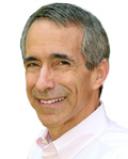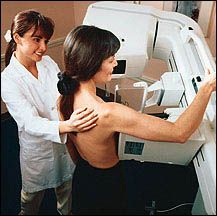

Living in Fear
The number one cause of death in the U.S. is cancer. Many of us go to doctors and wait nervously for the test results.
Do I have the Big C—or not?
Now cancer is moving on to become the number one cause of death globally, according to the World Health Organization.
Their opionion—half of the cases can be prevented.
Why Is The Cancer Rate Growing?
Perhaps the biggest reason is that people are living longer; second is that developing nations are adopting developed nations’ lifestyles.
The biological reason may be more basic. For what is biological life except a regenerating system of information powered by chance?
To survive we remake ourselves endlessly. Much of the body is remade within weeks.
If the information is transcribed incorrectly, cancer may result. That’s what is felt to happen with many common tumors.
And more mutations are propelled by chance events. They can be changing viruses, like those that cause types of lymphoma; exposure to chemicals, like the PVC monomer than causes angiosarcomas; or the many new cell mutations brought about by smoking or chewing tobacco.
The older we get, the more chance events.
So What Can Be Done to Prevent Cancer?
Plenty.
It’s useful to look at what the WHO considers the most preventable causes, and see what populations as well as individuals can do:
1. Tobacco—Even tertiary smoke can cause tumors ranging from lung to esophagus to kidney. The Surgeon General’s recent report on tobacco lists 13 cancers whose incidence is increased by smoking.
Many nations ban smoking from public places. Kids are not allowed to smoke. Anti-smoking ads and programs help.
Perhaps e-cigarettes yoked together with cognitive behavioral treatments will help some individuals quit smoking. Raising the price of a pack certainly works—though it creates hardship. Early education helps, too.
2. Infections—AIDS is now more effectively tackled than in the past. Hepatitis B has an effective vaccine, and hepatitis C may have one soon. Perhaps the most useful new development for Americans in terms of infective cancers is the HPV (human papillomavirus) vaccine. Vaccinate young girls and the rate of cervical cancer should go down.
Much still remains to be done treating IV drug users, who may survive many infections before succumbing to very nasty tumors viruses set in motion by assaults on their immune systems.
3. Obesity —Think of fat as pro-inflammatory, and the obesity epidemic’s effect on cancer becomes easier to understand.
Bigger people get more frequent tumors. People who eat more processed food get more tumors.
Refined sugar is a major factor in obesity worldwide. If you do the thought experiment it’s a clear line—in populations, sugar leads to greater obesity leads to cancer.
Is it time to think of added refined sugar—of which there are 30 kinds, including high fructose corn syrup, as indirectly carcinogenic?
It looks like subsidizing corn substitutes through agricultural subsidies—as the US still does—is probably a bad idea. As does advertising sugary snacks and foods to kids.
Cutting agricultural subsidies can save billions of dollars a year now. Who knows how much it might save in health care costs?
4. Alcohol—Regular low dose alcohol may prevent cardiovascular disease, perhaps even Alzheimer’s disease. It can make life more enjoyable. Yet overall death rates don’t really budge much.
Why? One reason is that alcohol acts as a carcinogen.
Alcohol has many other functions, social, cultural, even political. But people who drink too much put themselves and their families in jeopardy.
Binge drinkers may be more concerned with police wielding breathalyzers than dying from tumors. Yet they should fear both. And their families and friends should let them know that, too.
5. Air and Water Pollution—Cut the amount of soot and particulates in the air, and cancer rates go down. Many different substances dumped into air and water, from heavy metals to industrial pollutants, can cause cancer.
Yet water and air quality have much improved in the US. Elsewhere the problem is bigger—some estimates are that northern Chinese lose five years of life on average to pollution, particularly from coal plants.
If fracking does not dramatically increase methane levels, it is possible replacing coal with natural gas may prove helpful to the public health.
6. Radiation and Sunlight—in Australia an interesting experiment was tried.
One beach town got unlimited supplies of sunscreen. A similar town did not.
People did not have to use sunscreen. But if they wanted to, it was free.
In the town with free sunscreen, rates of melanoma went down 50 percent.
Sunlight has many different uses. It can make people less depressed. It can boost vitamin D.
It can also roast people. That helps cause melanoma, basal cell and squamous cell carcinoma.
Effective treatments go beyond sunscreen. People can wear clothing—including while on the beach. They can wear hats. They can avoid sun tanning salons.
And medical use of radiation is increasing cancer risk. Do we need as many CAT scans as we do? As many diagnostic x-rays?
Here prevention can become simple—performing diagnostic tests only when clinical trials indicate their worthfulness.
What Can Be Done
Cancer is now the leading cause of death in the U.S. Soon that will prove true almost everywhere.
Much of it is preventable.
Public health actions—like cleaning the water and air—can help.
But people can do quite a bit on their own.
They can walk. They can shade their skin from excessive sunlight. They can eat whole foods and diets, like the Mediterranean diet, associated with better health.
If they do, collectively they will prevent a great amount of illness.
And cancer is just one group of diseases. Controlling obesity also prevents heart attack, stroke and diabetes. Cutting back on tobacco and alcohol can prevent tumors, infection, heart and vascular disease.
The message is pretty simple—use the body the way it’s built. Do that, and more than cancer can become preventable.
And there’s a major plus —the healthier you become, the healthier your community becomes.



